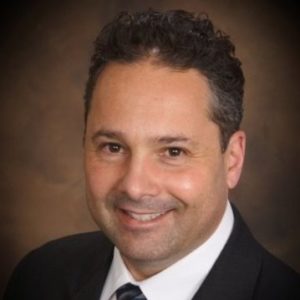Marketing Senior Care During the Pandemic, Part 1: Best Practices to Follow

Allison Wert, Marketing Manager, SmartBug Media
The pandemic has reshaped senior care facility marketing, while also making effective marketing more important than ever. This is Part 1 of a two-part marketing series will highlight new best practices and techniques that facilities can use to boost marketing efforts and success.
While senior care facilities may have had well-running marketing operations before the pandemic, the past year has altered not only the senior care industry, but also the types of marketing and messages that are effective. As facilities focus on filling vacancies and bolstering their marketing efforts, they’ll need to make some significant changes to stay effective. Understanding the new best practices for marketing during the pandemic can help a facility’s efforts to be more successful.
How to Determine Messaging
The messaging a facility used before the pandemic won’t necessarily be as effective now. Allison Wert, Marketing Manager at SmartBug Media, highlights the importance of transparency in marketing messaging. “In some instances, prospects appear to be growing weary of hearing about COVID-19; in others, they need to see a wealth of information to put their fears at ease. In either instance, communities should make information on safety protocols readily available and provide frequent updates to build public trust,” explains Wert.
She also suggests that communities leverage their own residents to tell the story through testimonials and videos. That highlight why they are thriving in a senior living community. “These types of testimonials are the most powerful way to combat negative market perceptions.”

Chris Steenstra, Chief Administrative Officer, Mower
Chris Steenstra, Chief Administrative Officer of Mower, led the Mower team that created the award-winning Caring Gene® marketing recruitment campaign for Iroquois Healthcare Association to address New York State’s long-term care and home health caregiver shortage.
Steenstra also notes the importance of carefully developing a marketing message. “There’s never been a better time to pay attention to your brand, your reputation, and your goodwill in the community,” she explains. “Take stock of the things your facility is doing to promote safety – cleaning practices, PPE, staffing ratios, visitor policies, etc. – and incorporate these messages into your website, e-newsletters, internal signage, and other marketing materials. Make sure your frontline caregivers are well-versed on your safety protocols, too. They’re your brand ambassadors and can leave a positive impression with families, leading to positive word-of-mouth and referrals.”
Steps to Take for Effective Marketing
With the loss of some traditional marketing methods like in-person networking and in-person tours, facilities need to emphasize other marketing techniques that are still practical and effective. Steenstra recommends that facilities start by developing a strong, differentiated brand message that they express in a creative and memorable way.
“So much of healthcare advertising is a sea of sameness. Facilities that can break out of that mold, with a brand look and feel that’s distinctive, are on the right path. At Mower, we have a research-based approach we call Brand as Friend® – it’s the idea that strong brand relationships are like strong friend relationships. Both are built on the same tenets – things like trust, authenticity, and style,” she explains.
Wert notes that facilities need to start by developing a robust inbound marketing strategy. “Referral sites can be costly, and communities should look to build their presence on their own website with a strong content program and SEO tactics to organically attract the right prospects,” she suggests. Wert explains that using automated email nurtures to develop the existing database of prospects is cost-effective. Facilities can also host a virtual event program to maintain interaction with prospects but at an affordable price point.
Steenstra also highlights the importance of doing a few things well, instead of doing many things not so well, especially when marketing budgets are limited. “At Mower, we always focus on building a differentiated brand message. That’s the foundation for success,” she explains.
Steenstra recommends that facilities start with their end goal in mind, considering what their marketing objectives are and how they’ll measure success. Facilities should next analyze their target audiences, identifying what motivates them, what their current mindset is, and what the facility wants the audience’s mindset to be. Lastly, facilities should evaluate their websites and the customer experience that they deliver. “Does it load quickly on a mobile device? Are your form fills short and simple? Does it convey the kind of brand experience that you’d want someone to have at your facility? Your website experience is especially critical in the current environment,” she explains.
By refining messaging and using some different marketing techniques, facilities can still connect with potential residents and their families. Effective marketing can help to fill vacancies while also improving the facility’s public reputation. Facilities that already had a robust marketing plan in place before the pandemic should be able to pivot to new messaging and techniques easily, but even facilities with more limited marketing in place should benefit from these best practices.
Stay tuned for Part 2 of our marketing series, which will detail how you can put these tips to use as you develop or refine your sales funnel.

Paige Cerulli is a contributing writer to i Advance Senior Care.
Related Articles
Topics: Business Marketing Including Social Media and CRM , Facility management , Featured Articles , Technology & IT










